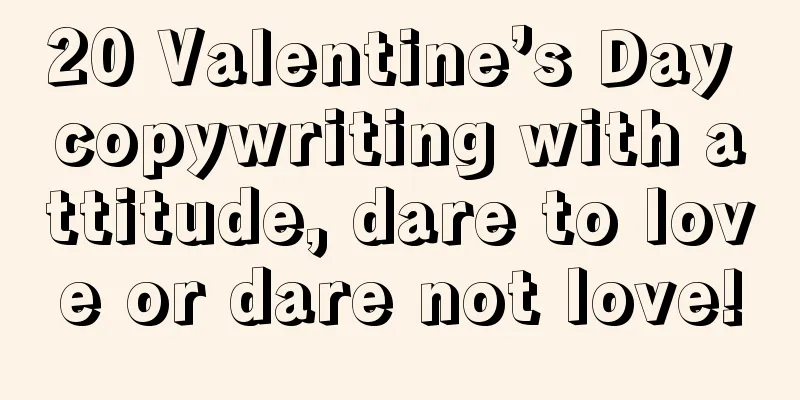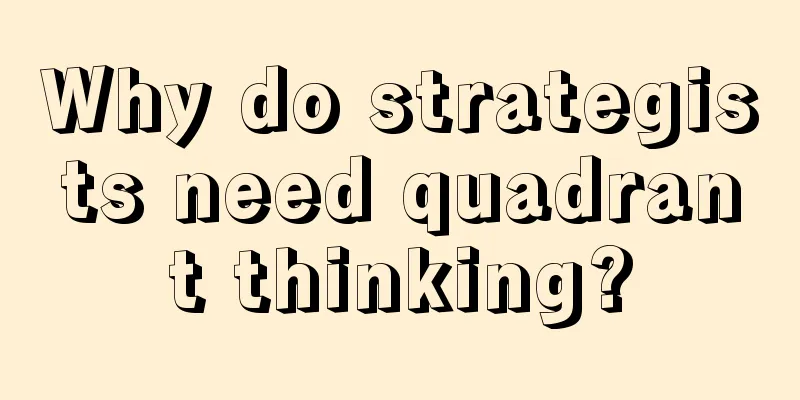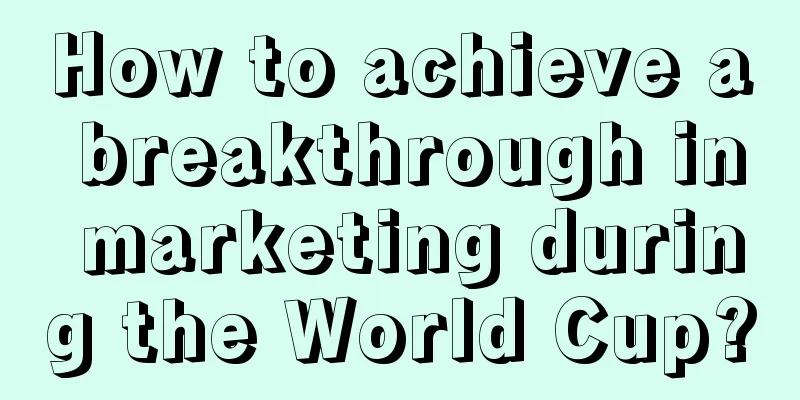The traffic code behind the incredible
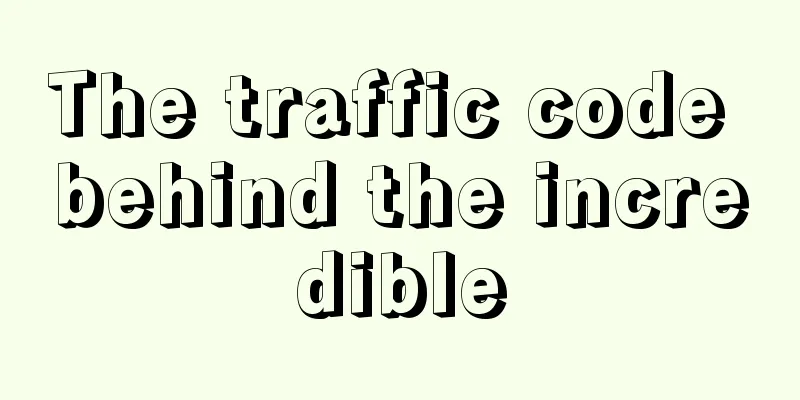
Once, I was chatting with a friend and we talked about the rules for brands to break out of the circle. The other party said with emotion: "Look at them, they can create marketing events without any budget." We invest millions of dollars in the market every year, but we have not seen much effect. What is the secret? Yes, it really does. Let’s start with a recent hot marketing event. A few days ago, Balenciaga launched a bracelet during the Paris Fashion Week, which went viral because it looked like an ordinary roll of tape. Although the official price of the "innovative" bracelet has not been disclosed, it is rumored that it will sell for 3,000 euros (about 23,525 yuan). You heard it right, a bracelet that looks like tape is sold at such a high price, and netizens subsequently quarreled. Some said, can you make money from this? Really? Call the police. Others said, office supplies costing a few dollars, if you change the logo and put them on the counter, the price will increase 10,000 times. What financial management can be better than this? And so on… Have you noticed that product design is increasingly blurring the boundaries between brands? In 2016, Supreme launched a red ordinary brick, which sold for $40 and became a hot topic in the fashion industry and on social media; Gucci once launched a series of sportswear, which imitated Adidas' iconic three stripes in design, but deliberately changed them to four stripes, creating a familiar yet novel effect. Not to mention those things that originally seemed worthless, such as paper clips, old man's sandals, and canvas bags, which can spark big discussions with just a slight modification. Do you know the incredible thing, why is the traffic password hidden? In fact, there is a complete set of logic behind it. 01Designing a marketing campaign is a lot like telling a story. Whether it's a hero learning a unique sword technique in a martial arts novel, or a series of plots in a movie, game, or anime, there are certain "routines" in the development process. for example: The protagonist of the novel starts with basic sword practice, gradually grows, and finally reaches the realm of "no moves are better than moves". This process is the most common design method in creation. After all, any story will revolve around some kind of contradiction or conflict. The routine here is more about constructing contradictions and conflicts, and how to use them to promote the development of the story and arouse the interest of the audience and readers. Story conflicts can be divided into "big conflicts and small conflicts". Big conflicts run through the entire book and the entire story line and are the driving force for the development of the story; while small conflicts appear more often in story details, such as a character's inner struggle, which adds emotional depth to the story. Regardless of whether the conflict is big or small, it exists to enrich the story content and increase the audience's involvement. The method of constructing the conflict is similar. The main difference lies in the amount of information they carry. Whether these contradictions can be interconnected to form a unified whole is a consideration of the story's narrative structure; think about it, are the TV series and movies you have seen so far like this? So, how to build story tension and attract users to keep their attention? I think these five key points can also be used in marketing events: contrast, difference, conflict, turning point, and reconciliation. What is Comparison? Put two or more different things together and see what differences or similarities there are between them. There is no decision without comparison. We often do this. Before buying something, we will compare the prices and performance of different brands; when walking on the road and seeing a beautiful scenery, we will adjust the settings of the camera to capture the picture more vividly. In marketing, comparison can be roughly divided into three types: appearance comparison, cost-effectiveness and price-performance ratio. Appearance comparison and cost-effectiveness are easy to understand, which product is better looking and more valuable. As for price-performance ratio, it depends on how much psychological satisfaction this product can bring to you and how much you think it is worth. Contrast itself is meaningless, but it is an important basis for constructing contradictions and conflicts. Why? Think about it, when everyone is using the same method to make comparisons, doesn’t the comparison lose its novelty? The same is true for marketing communications. If you only stay on the surface comparison, you may attract consumers temporarily, but it is difficult to stand out in the market. So, how do we dig deeper and build new ways of comparison? The key is contrast. There is a former Soviet psychologist named von Restov who said that the more unconventional something is, the more it can attract people's attention. That's right, contrast can attract users. Sometimes, we confuse the two. In fact, they are different. Contrast emphasizes similarities and weakens differences, while contrast emphasizes differences and weakens similarities. For example, in art and photography, contrast emphasizes black and white, light and dark; contrast will say that it is darker than this, brighter than that, etc. You see a pretty photo of someone online, and you seem to get along well with her, so you ask her out in person. But after you meet her, you discover that she has over-Photoshopped her photos, and her voice has a strong masculine tone, which is obviously different from her on the Internet. This unexpected difference is the contrast. What is the use of contrast in marketing? I recently saw a short video on Douyin that went viral: a boss asked a post-00s employee to prepare fruit for a meeting, but the employee ended up buying a few pieces of sugar cane. Everyone munched on sugar cane while having a meeting, and this scene made netizens laugh and attracted a lot of attention. There was also this: a spicy noodle company was advertising and gave everyone a super long spicy noodle, which was more than one meter long. As a result, the boss and executives all ate the spicy noodle, which was a very funny scene. Therefore, the magic of contrast can break our conventional thinking and make people surprisingly discover that it is possible to play in this way. 02The question is, how can we achieve this effect? I have a trick that I learned from watching movies. Arrange things in order from near to far, and divide them into details, impressions, situations, scenes and backgrounds. Doing this, from specific small things to the overall background, step by step, can help you build the whole picture more clearly. The method of digging out details in marketing lies in the process from "real" to "virtual". Common rice advertisements all say things like "good nutrition, pure taste" and so on. It looks like a sales pitch from any angle, and you feel like all the actions are like holding a hypocritical sickle in your hands. If I were to write it, I would probably say: My rice may not look plump, but every grain is fragrant, glutinous and delicious; I hope everyone can taste the rice grown in the black soil with its original flavor; I am not sweet originally, but after being cooked I can make people feel satisfied and warm. Therefore, the so-called details are to turn the object into the subject, and after integrating into the subject, you can really listen, really see, and really feel. This is a sentence that teachers often say in performance and hosting classes. If you "integrate" correctly, you will be able to speak correctly. If details are the most attractive, then the contrast of impressions must be second. Impression is the first picture a person sees, or the feeling when they first come into contact with something. The first impression is particularly important in communication. Once formed, it is deeply rooted in people's memory like an anchor. What is your impression of the Forbidden City? It is grand and solemn. However, the cultural and creative products of the Forbidden City have taken a personalized and cute route, turning into an Internet celebrity brand that young people can't put down. If you want your product to stand out through posters, you might want to think about how to create a sense of contrast visually; some combinations are unexpectedly good. For example, Weilong spicy strips use apple-style packaging and poster design, which makes the spicy strips that originally felt greasy become fresh and high-end. Simply put, contrast is to highlight the contrast between different elements. Remember, it is the contrast. Situation and scenario may sound similar, but there are some key differences between them. Situational contrast focuses more on people's psychological state, emotional changes, behavioral patterns, and even the contrast under specific circumstances, and is more focused on "situation"; scene focuses more on "visual light, environment, society, and history. Let me give you an example: Brands such as Supreme, Gucci and Balenciaga have always been synonymous with high-end in everyone's mind, and their product quality and design aesthetics are very particular and strict. When they suddenly put high-end logos on cheap products, the unexpected move will create a strong sense of contrast in people's minds. Xiaomi spent 2 million to design a new LOGO, but ended up changing the original right-angle LOGO to a rounded one, which is a situational contrast. In the public's view, spending $2 million was expected to bring about some earth-shaking changes, but the final minor adjustments were unexpected because they challenged people's expectations of high investment and low changes. You usually think that fresh milk tea is a standard for beautiful women, but what do you think if it suddenly appears in the hands of a muscular man who has just finished training in the gym? Or how would you feel if instant noodles that cost only 4.5 yuan were carefully presented on a plate and appeared at a dinner party in a five-star hotel? These are all scene contrasts. In the anchoring of the small and fresh milk tea, the imagination space tends to be female. When such a milk tea appears in the hands of a muscular man, the scene is very obvious; on the other hand, it is synonymous with economy and affordability, and usually does not appear in high-end occasions. This scene will make people feel surprised. So, what is background contrast? To put it simply, background is the appearance of inconsistent elements, events or behaviors in a certain context (situation), which makes people feel a little surprised. This contrast is mainly highlighted in the relationship between the subject and the background. IKEA held an event in which it filled the subway with furniture, including sofas, bookshelves, and carpets, to create a comfortable home feeling. This approach contrasted with the inherently crowded and cold environment of the subway. We will see some fashion magazines, such as ELLE, Marie Claire, etc., on the cover, the stars often wear colorful retro clothing. This design is natural and not deliberate, which is the contrast with the background. If you dig carefully in the five scenes, you will find that various objects can create contrasts. All the secrets that make people feel different are here. But for small contradictions and contrasts, it can only be simply reflected in the contrast gap, while large contradictions and contrasts can unfold multiple flash points. To put it simply, the contrast itself must make it clear "where the problem lies". 03How do you find the big contradiction in a marketing story? The key is conflict. Sometimes conflicts do not need to be shown directly. They can be implied in subtle ways, or by slowly weaving together various clues to allow the problem to gradually intensify. These are all considered conflicts. Conflict between characters is the most direct and effective method. Different ideas, events, goals, emotional changes, and behavioral differences can all become sparks for conflict. Every case that went viral last year was inseparable from conflict. After Li Jiaqi's live broadcast, "Fenghua caught the overwhelming wealth" by publishing content related to the event and cleverly taking advantage of the social hot spot "79 yuan is not expensive at all" to publicize the advantages of its own products and successfully transform other people's negativity into exposure for its own brand. There are many more examples like this. The conflict point of the collaboration between Luckin Coffee and Moutai lies in the first appearance of "coffee and wine"; the collaboration between FENDI and HEYTEA creates a conflict between the high-end market and daily consumption, and so on. If we look at the cases where there is no obvious conflict, it is mainly manifested in emotional resonance, such as Apple's "Passing Five Gates" advertisement, or the Spring Festival special project "The 3286th Station" jointly organized by Bilibili and China Railway, and the Super Brand Day "Super Fragrant Coriander Noodles" Campaign jointly organized by Douyin and White Elephant. These contents stand out in the communication because they have strong background support. If it is a small brand, it is difficult to stand out in today's information explosion era if it relies solely on emotional marketing. So, where do we create conflicts and contradictions? In character scenarios: attraction = encountering a problem + how the character copes with it + increasing the problem + finding a solution; in marketing scenarios: attraction = doing something different + getting people to discuss + showing your brand’s characteristics. When Jobs left Apple, he said: No one can defeat me except myself; only by forever fighting against the past and resolving consumer conflicts ahead of competitors can we avoid being overtaken by competitors. Let’s see how Joyoung does it: They are pioneers in the blender market. The silent blender launched by Shuaixuan solved the conflict between the loud noise of traditional blenders and consumer perception, and then it sold very well in the market. Soon after, Midea and Supor also began to attack this market. Therefore, in order to consolidate its market position, Joyoung began to "attack itself". They found that consumers like to make soy milk and juice at home; but the thought of cleaning the machine is a headache. This conflict led to the development of a new product, which later seized the market opportunity again. 04If you think this sounds too formal, here's a simpler trick: Challenge consumers’ old habits. In most cases, consumers' old habits are formed because of different values and cognitions. Whoever can find out the contradictions caused by cultural differences and solve them will be able to break new ground. In the past, everyone was used to wiping their faces with towels, but towels were difficult to wash and unhygienic. Quanmianshidai saw through this and launched disposable face-washing towels, which were both hygienic and convenient, and directly brought a major renovation to the towel market. So, the same applies to marketing. Before deciding to talk about a certain topic, first find out what different opinions people have, and then use these opinions in your promotion, which is actually challenging everyone's traditional cognition. After the Chinese New Year, I went to the cinema to watch "The Annual Meeting Cannot Stand Up". Before I watched it, my friends said: "It's not worth watching, it's like a sentimental story", but why did most people still watch it even though they knew it was a sentimental story? Because the movie mobilized the audience's old cognition and brought new cognition. Those new perspectives tell us that even the most ordinary people have the right to pursue their dreams and stick to their inner beliefs. This turning point is just like the world that will eventually unite after a long period of division, and will eventually divide after a long period of unity. When a conflict is established, the first thing to think about is how to resolve it, because all conflicts will end in reconciliation, which is the "ending" in a novel. Looking back, Balenciaga rarely collaborates with other brands, but instead launches a series of mundane products such as paper clips, old-man sandals, and canvas bags. What is it selling? A concept, a brand image, an attitude towards life. These seemingly ordinary products, due to their unique design and brand support, have a meaning far beyond their actual use and become a fashion statement. It's like a reconciliation. There are positive and negative reconciliation. Positive reconciliation is to find a balance and make one party of the conflict change to solve the problem; negative reconciliation is to make one party of the conflict withdraw and end the conflict. If there is no reconciliation, the conflict will become more and more acute, and eventually lead to the disappearance of one party. Why not stop and think about it, why doesn't Balenciaga do joint ventures? Joint ventures will destroy the inherent image and dilute the brand spirit. Independent expression without joint ventures plus cheap goods will continue to strengthen individuality. Contrast, contrast, conflict, turning point, and reconciliation are a set of complete logic. Imagine marketing as a story, and then add elements into it to make it easier for people to remember. In summary: No matter how small the marketing is, there is a story to tell. A poster, a short video, a joint venture, there is always a contrast and conflict in it; the story is dull, how can it become the "electronic pickled mustard tuber" of the public? Author: Wang Zhiyuan, public account: Wang Zhiyuan |
<<: 5 billion coconut trees, growth curve
>>: How to create a product that makes people scream?
Recommend
What is a normal click-through rate on eBay? What is the reason for a drop in eBay page views?
For sellers selling goods on eBay, click-through r...
With 1.55 million followers added in one week, how funny are the most contrasting sisters on Douyin?
This article starts with Doraemon's family, an...
Meituan’s short drama is launched on Douyin, is the local life war coming to an end?
The competition and cooperation between Meituan an...
There are three levels of business analysis. Which level are you at?
In business management, business analysis is a key...
How can a complete amateur become a Xiaohongshu blogger? 3 tips from my recent experience in blogging!
The content of this article comprehensively and sy...
Self-broadcasting accounts for more than 50%. Why are more and more brands starting to "self-broadcast"?
During this year's 618 e-commerce festival, mo...
What are the tips for printing Amazon FBA labels? Tips to share
Amazon products are generally stored in warehouses...
Inventory of autumn consumption trends: Uncovering the autumn life of contemporary consumers
As the autumn breeze brings coolness, we usher in ...
Stop updating for 3 years? No money? Those internet celebrities with millions of fans who "disappeared"...
This article introduces the Douyin bloggers who st...
Long video theater midfield battle
This article mainly discusses the development stat...
Pinduoduo Temu Festival Product List
2024 Pinduoduo Temu New Year Toys and Games-Festiv...
How much is Amazon's overage inventory fee? What is the calculation logic?
Merchants who open stores on Amazon should be fami...
What are the requirements for opening a store on Facebook Mall? What information is required?
Facebook is a social networking site, just like We...
What does Amazon Advertising Portfolio mean and what does it do?
For Amazon merchants, it is necessary to better op...
Pinduoduo Live, squeezes into the table
Recently, Pinduoduo has been making frequent moves...
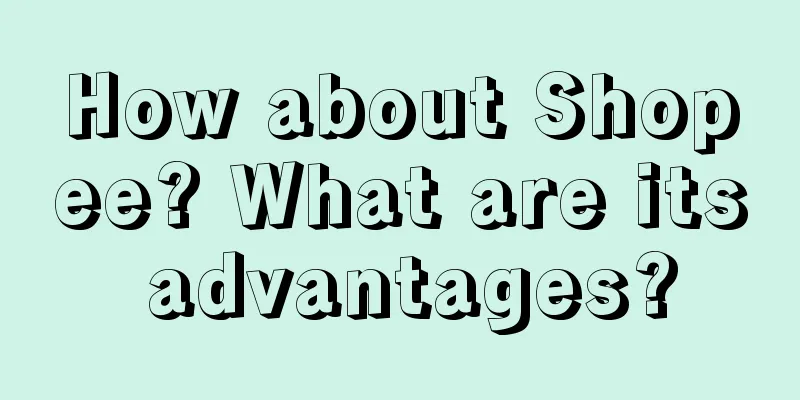
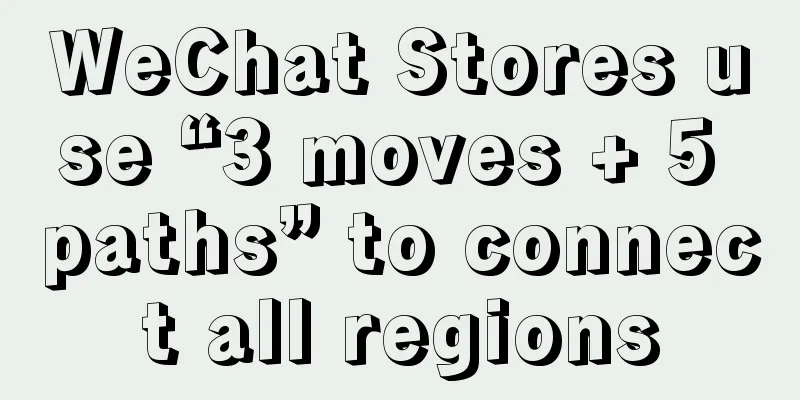
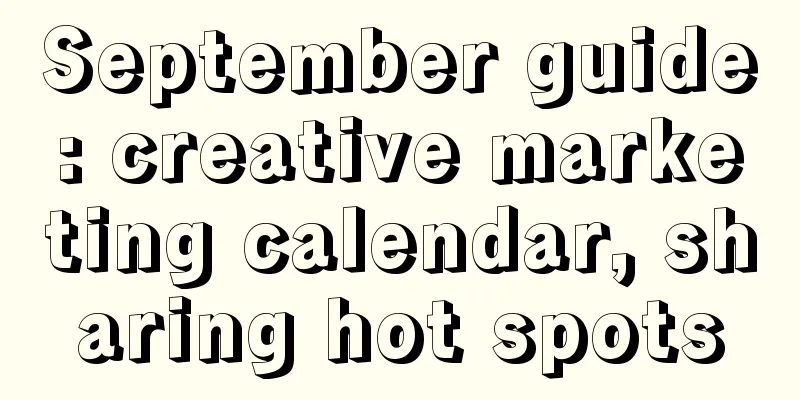


![Damn! I'm surrounded by the wool party [Part 2]](/upload/images/67e74c20c5c60.webp)
